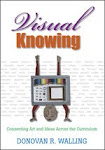
Architecture often has a sculptural quality. Frank Gehry’s Disney Concert Hall in Los Angeles, Frank Lloyd Wright’s Guggenheim Museum in New York City, and Le Corbusier’s Notre Dame du Haut Chapel at Ronchamp in eastern France spring to mind as Modernist examples. But in the American Southwest stands an equally impressive, though spatially more modest structure, older than these but still archetypically Modernist in its form and line: the San Francisco de Asis Mission Church in Ranchos de Taos, New Mexico.
Built between 1772 and 1816, this adobe church was constructed by Franciscan Fathers, whose patron was St. Francis of Assisi. It is located southwest of Taos, an artists’ colony in the high desert of northern New Mexico, near the Taos Pueblo, the 1,000-year-old settlement of the Taos, or Northern Tiwa, Native American Pueblo people. Nearby the Sangre de Cristo mountains provide a backdrop.
What distinguishes this church sculpturally is not its entrance, which is fairly conventional, but its rear structure. The asymmetry of the exterior of the apse (in conventional terms) and the use of stunted, lump-like buttresses give the building a decidedly Modern sculptural appearance, much as some ancient Chinese ceramics, say, from the Shang Dynasty (1600-1100 BCE), look as though they might have been thrown yesterday.
Declared a National Historic Landmark in 1970, the mission church was recognized much earlier as something special. It has been captured as art by the likes of Ansel Adams and Paul Strand (photography), Georgia O’Keeffe (painting), and Gustav Baumann (color woodcut). O’Keeffe, in fact, called the church “one of the most beautiful buildings left in the United States by the early Spaniards.”
One would be hard-pressed not to be captivated by this early example of adobe architecture. I know I was. So on a recent visit to New Mexico, I also found myself digitally capturing the image of this church, as shown above. The combination of adobe, blue desert sky, and the influences of sculpture, architecture, and religion made the opportunity to record an impression irresistible.






